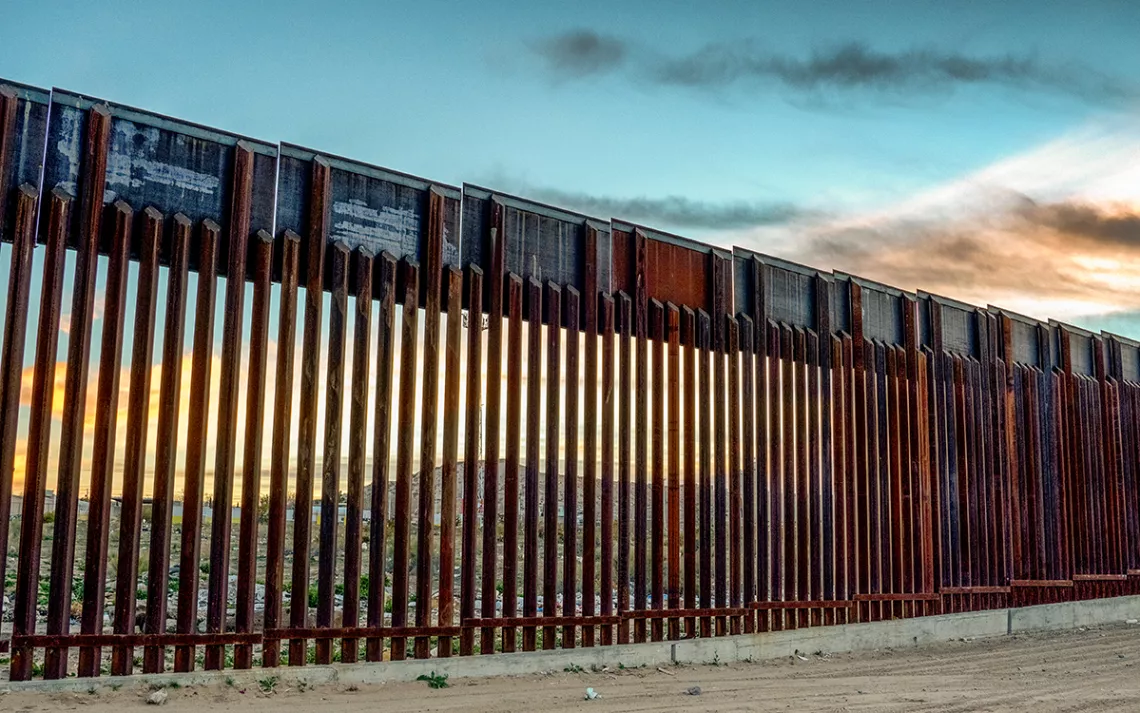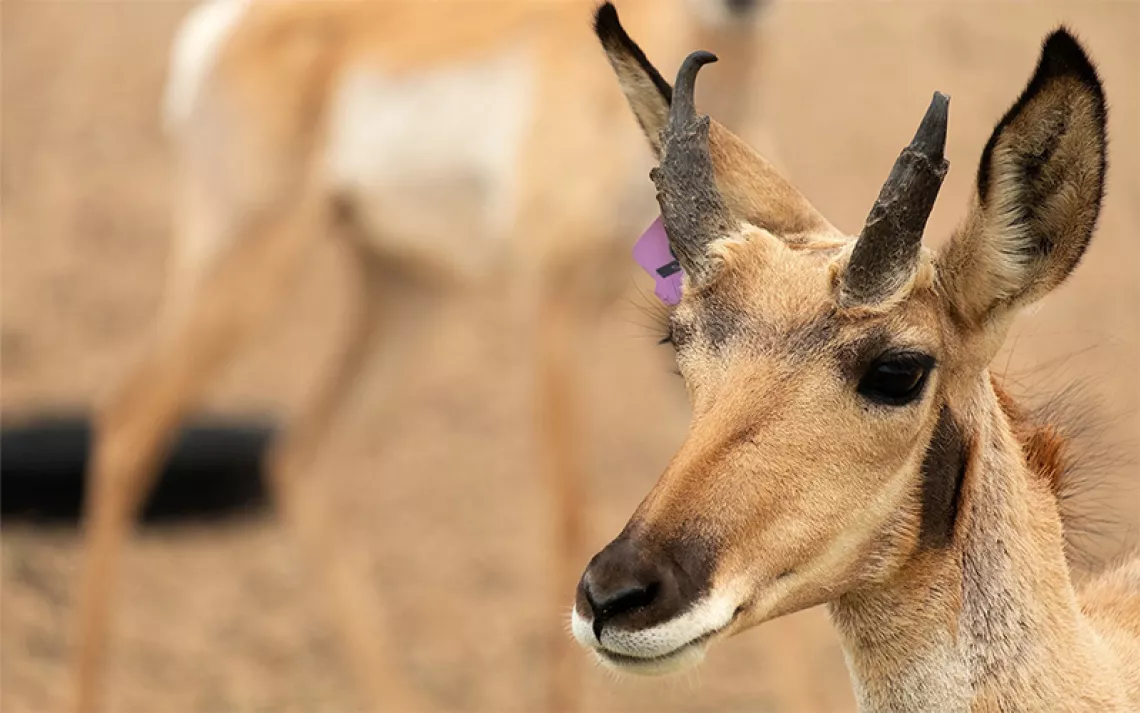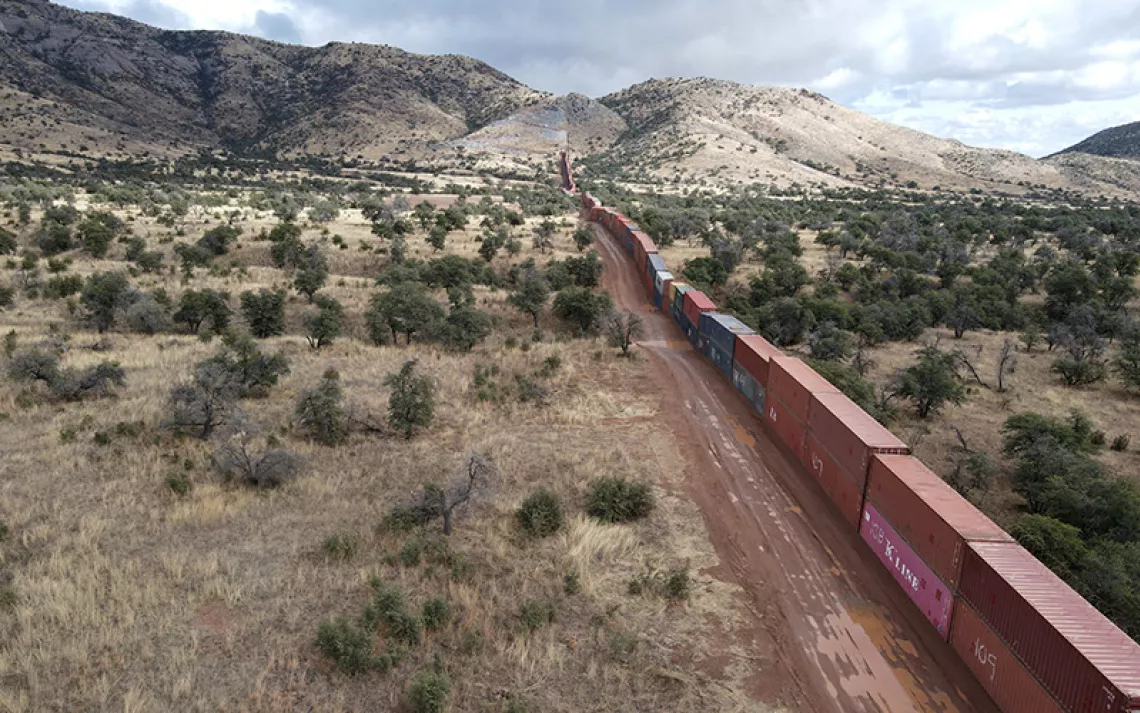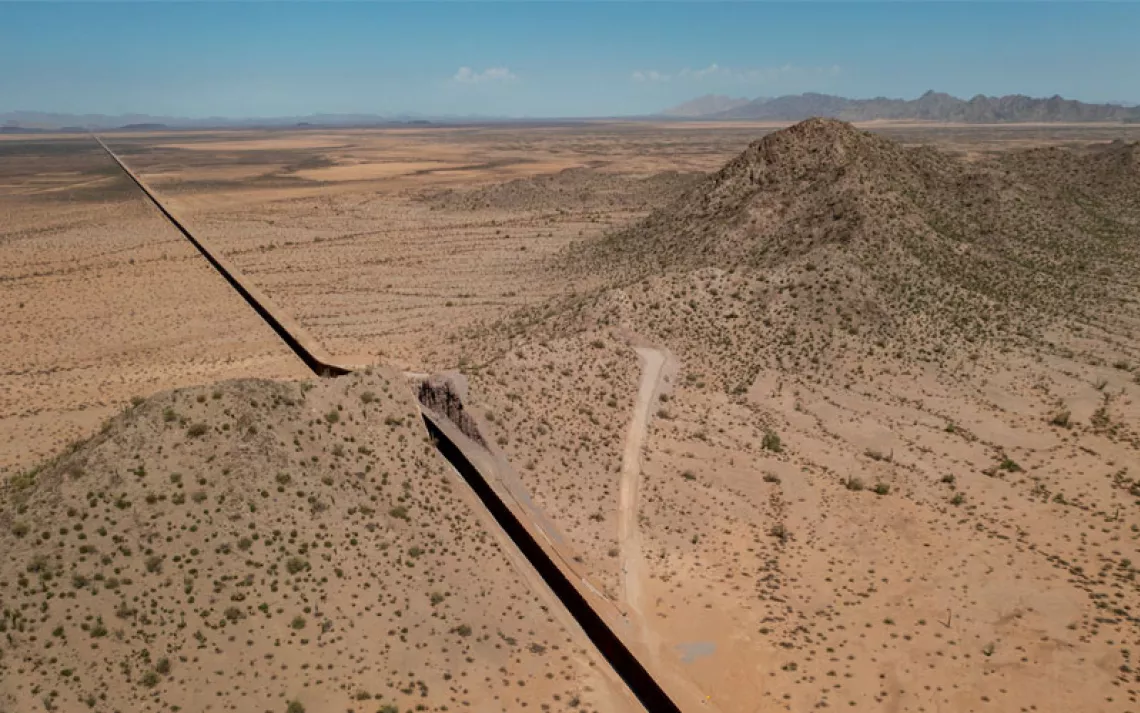What Comes Next for Trump’s Border Wall?
Conservationists are considering how to repair the damage done

Photo by grandriver/iStock
When President Joe Biden, on his first day in office, signed an executive order halting the construction of Trump’s wall on the US-Mexico border, borderland communities and environmentalists breathed a sigh of relief. Then, they took another deep breath. The pause will last only 60 days, and construction crews are coiled and prepared to resume work as soon as that time is up.
Last week, border wall opponents got a sign that a more permanent solution could be on the horizon. The Biden administration asked the Supreme Court to delay arguments in a lawsuit brought by the Sierra Club while the new administration assesses the “legality of the funding and contracting methods used to construct the wall.”
The move is the latest development in a legal battle that has been going on for more than two years. Even if a change in administration and an end to litigation can halt further construction, environmentalists and Native American nations will be struggling for years, if not decades, to repair the damage already done. And for many of the ecosystems of the borderlands, it may be too little, too late. By the time Donald Trump left office, contractors erected over 450 miles of border wall along the international boundary with Mexico. The San Pedro River, the last free-flowing river in Arizona, was dammed. Springs in the Coronado National Memorial and the San Bernardino National Wildlife Refuge, desert oases for animals and people alike, were pumped dry to mix concrete. And in Organ Pipe Cactus National Monument, iconic saguaro cacti that can grow taller than 60 feet were bulldozed into heaps to make way for a steel barrier half their height.
In February 2019, miffed over what it saw as Congress’s inadequate funding for a promised border wall, the Trump administration declared a national emergency and announced it would take $6.7 billion from the military budget to pay for the wall. Days later, the American Civil Liberties Union, acting on behalf of the Sierra Club and the Southern Border Communities Coalition, sued the Trump administration, arguing that the diversion of funds was illegal and asking a federal district court to block any construction. In May 2019, just one day before construction was set to begin on over 50 miles of wall in Arizona and New Mexico, the court issued an injunction. The Trump administration appealed twice. It lost both times.
Then, in July 2019, the Trump administration asked the Supreme Court to intervene. Until the court could definitively rule on the funding’s legality, the administration argued, it should be allowed to proceed with its construction plans—and the Supreme Court agreed. In the lower courts, the ACLU continued to thwart the Trump administration at every turn. But the Supreme Court ruling stood, and construction in the borderlands accelerated. “It was maddening,” said Gloria Smith, a managing attorney for the Sierra Club’s Environmental Law Program. “We kept having all of these legal victories, but the Supreme Court, in just one sentence and without an opinion, stayed the court of appeals’ decision.”
The Supreme Court was set to make its final decision this month. Then, at the request of the Biden administration, the court vacated upcoming oral arguments. The Department of Justice’s decision not to defend the national emergency declaration means all the opinions and injunctions upheld by the court of appeals stand. The border wall is, in effect, illegal.
The environmental community has now begun the torturous process of assessing the damage already done by border wall construction and is making the case for how to best mitigate further harm. A letter drafted by Defenders of Wildlife and signed by nearly 50 conservation organizations, including the Sierra Club, calls on the White House to cancel outstanding construction contracts and allocate any remaining funds toward mitigating the wall’s impact on the communities and ecosystems it transected; tear down segments of the wall that pose a threat to wildlife; and rescind the environmental waivers that allowed construction crews to bulldoze, clearcut, and dynamite through national monuments, wilderness areas, and wildlife refuges.
To expedite the construction of the wall, the Trump administration waived 84 federal laws designed to safeguard the environment and give the public a chance to participate in federal projects, including the Clean Air Act, the Clean Water Act, the Endangered Species Act, and the National Environmental Policy Act. Trump defended the waivers by arguing that the wall would reduce violent crime along the border, despite FBI crime statistics that show border communities are consistently some of the safest in the United States. Just in Texas, the cities of McAllen, Laredo, and El Paso hold violent crime rates well below the national average. The borderlands are not the lawless place Trump made them out to be. Rather, advocates say, Trump brought lawlessness to the borderlands. “Trump was all about law and order, but lawlessness and corruption were the real signatures of his administration,” said Dan Millis, the manager of the Sierra Club’s Borderlands program. “With the stroke of a pen, the Biden administration can rescind the waivers and restore equal protection under the law to border communities.”
The letter highlights a few immediate actions the Biden administration can take, including opening any floodgates in the border wall to facilitate the free flow of water; turning off all lighting along the wall, which washes out night skies and is just as intrusive to nocturnal desert animals as the wall itself; and begin erasing roads plowed for construction.
By far, the largest threat the border wall poses to wildlife is the severing of critical migration corridors. In the Jacumba Mountains Wilderness, in Southern California, the border wall will split the population of endangered peninsular bighorn sheep in two, reducing genetic variation and their capacity to adapt to a changing climate. Segments of wall along the Cabeza Prieta National Wildlife Refuge, in southern Arizona, will prevent endangered Sonoran pronghorn—the fastest land animal in the Western Hemisphere—from reaching Las Playas, one of the few water sources in the region. And in the Coronado National Forest, the wall is blocking jaguars’ paths through the Pajarito, Patagonia, and Huachuca Mountains. As every jaguar to make its way north into Arizona recently has been male, the border wall is likely the final nail in the coffin for a breeding population of jaguars in the United States. All in all, the border wall could disconnect more than 114 species from 50 percent or more of their range.
“This is really the first time in the history of North America that wildlife movement on a continental scale has been disrupted,” said Bryan Bird, the Southwest program director for Defenders of Wildlife.
The good news is that restoring these migratory corridors will take no more than removing key segments of the border wall, or even simply cutting holes in some sections. In many other places, restoration won’t be so simple. The saguaros bulldozed in Organ Pipe will take centuries to regrow. Desert aquifers—some of which were filled with meltwater from the last ice age—may never replenish, and if they do, it could take millennia. In the Coronado National Forest, where portions of the sky islands were blasted to make way for the wall, the landscape will likely be scarred forever. “We can’t un-dynamite mountains,” Millis said. “I tend to think of the mountains as the authority in this region. They barely notice us. And trying to carve borders through them just demonstrates our irrelevance.”
Mountain ranges, canyons, wetlands, and wildlife don’t neatly adhere to geopolitical boundaries. And for much of time, neither did people. Like many of North America’s wild places, the landscapes of the borderlands are a representation of not only nature but also culture. According to archaeological records and oral history, the O’odham people have lived in the region stretching from modern-day Phoenix south to Hermosillo, in Sonora, Mexico, and from the San Pedro River in the east to the Colorado River and Sea of Cortez in the west for thousands of years. The Gadsden Purchase of 1853 sliced the O'odham traditional lands in half, placing some of their territories in Mexico and some in the United States. For generations, the border remained porous. Trump’s border wall threatens to put a physical barrier right through the middle of O’odham lands. “What the wall represents is the same thing that the border represented some 160 years ago,” said Verlon Jose, governor of the traditional leaders of the O’odham in Mexico and the former vice chairman of the Tohono O’odham Nation in Arizona. “When I look at the wall, it’s like my heart has been severed in two.”
The Tohono O'odham Nation’s 62-mile-long border with Mexico was spared the wall, but construction destroyed ancient burial sites and bisected spiritual trails that generations of O’odham had traveled. In 2015, the Tohono O’odham revived their traditional salt pilgrimage—a 300-mile journey from Arizona’s Sonoran Desert to the Sea of Cortez. The pilgrimage served as a coming-of-age ceremony for young men and a way to gather medicinal herbs and salt, which the O’odham consider sacred and was important for healing, food preservation, and trade. Today, the salt pilgrimage begins in Pisinemo, in the heart of the Tohono O’odham Reservation, and heads southwest. Quitobaquito Springs, an ancient desert oasis in Organ Pipe Cactus National Monument, was once a traditional stop for salt runners making their way to the salt fields east of the Pinacate Mountains. Now, the wall forces them to cross into Mexico miles east of Organ Pipe. “To modify that routine—that way of life—is to cause disharmony,” Jose said.
He added, “How are we supposed to focus on the betterment of life or the journey we have ahead of us when we are looking at a monstrous iron wall?”
 The Magazine of The Sierra Club
The Magazine of The Sierra Club



